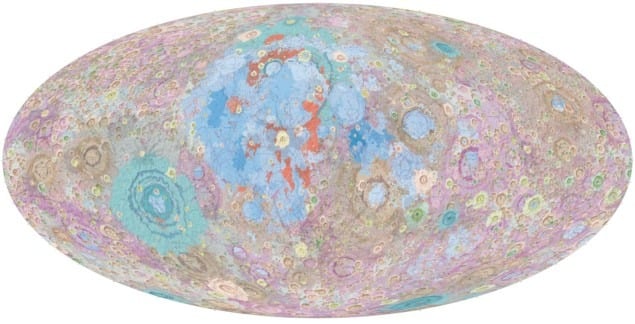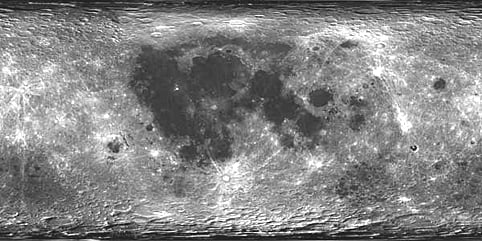
The Chinese Academy of Sciences recently released the 1:2,500,000 scale lunar map. (Credit: NSSC/CAS)
Over the years, there have been numerous attempts to document the surface of the Moon. However, none have been as comprehensive as the map released by the Chinese Academy of Sciences on June 14, 2022.
Compiled by geologists Jianzhong Liu and Ziyuan Ouyang, it boasts a scale of 1:2,500,000 million. This means that one centimeter on the map corresponds to 2.5 million centimeters of the lunar surface. In comparison, the detailed lunar map released by the United States Geological Survey (USGS) in 2020 had a scale of 1:5,000,000.
The recent high-resolution image was created using 15 years of data collected from the ongoing Chinese Lunar Exploration Program. Liu and Ouyang also used information from lunar exploration missions conducted by the US, Japan, and India.

The map identifies the precise locations of every known lunar rock, crater, basin, and structure. This includes 17 rock types, 12,341 craters, 81 impact basins, and 14 surface structures. Geological discoveries made at the sampling sites of the historic 1969-1972 Apollo missions and the landing site of the 2020 Chang’e 5 mission — where the youngest lunar rock known to date was found — are also marked.
The researchers believe the thorough lunar image will contribute significantly to scientific research. The map will also be a reliable resource for finding safe landing places for future lunar missions.
Meanwhile, the European Space Agency (ESA) focused its efforts on creating "the most accurate complete multidimensional map of the Milky Way." Released on June 13, 2022, it was compiled using data from Gaia, a space observatory launched in 2013. With its dual optical telescopes, Gaia can map the motion, luminosity, temperature, and composition of billions of stars. The information will give astronomers further insights into the evolution of our galaxy. It will also help them better understand the lifecycle of stars.
Resources: Space.com, Forbes.com, Zmesciene.com, Esa.int, Voanews.com
